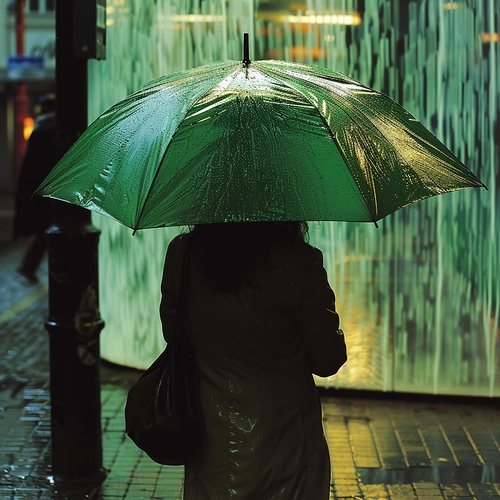Difference Between Seasonal Depression and Depression: A Detailed Look
Understanding the nuances between seasonal depression and depression can be crucial in identifying and managing these mental health conditions effectively. While both share common symptoms, there are distinct differences in their triggers, duration, and treatment approaches. This article delves into the intricacies of each condition, highlighting their unique characteristics and offering insights into effective management strategies.
What is Depression?
Depression, also known as major depressive disorder, is a common and serious mental health condition that negatively affects how you feel, think, and act. It’s characterized by persistent feelings of sadness, loss of interest or pleasure in activities once enjoyed, and can lead to a variety of emotional and physical problems. Depression can affect anyone at any age, and it often requires professional treatment to manage.
Symptoms of Depression
Depression symptoms can vary from mild to severe and can include:
- Feeling sad or having a depressed mood
- Loss of interest or pleasure in activities once enjoyed
- Changes in appetite — weight loss or gain unrelated to dieting
- Trouble sleeping or sleeping too much
- Loss of energy or increased fatigue
- Increase in purposeless physical activity (e.g., hand-wringing) or slowed movements and speech
- Feeling worthless or guilty
- Difficulty thinking, concentrating, or making decisions
- Thoughts of death or suicide
What is Seasonal Depression?
Seasonal depression, commonly known as Seasonal Affective Disorder (SAD), is a type of depression that occurs at a specific time of year, usually in the winter months when there is less natural sunlight. It is more than just the “winter blues” and can significantly affect your daily life.
Symptoms of Seasonal Depression
The symptoms of seasonal depression are similar to those of depression but typically occur during the fall and winter months and improve with the arrival of spring and summer. Key symptoms include:
- Feeling depressed most of the day, nearly every day
- Losing interest in activities you once enjoyed
- Experiencing changes in appetite or weight
- Having problems with sleep
- Feeling sluggish or agitated
- Having difficulty concentrating
- Feeling hopeless, worthless, or guilty
- Having frequent thoughts of death or suicide
Key Differences Between Seasonal Depression and Depression
While both conditions share similar symptoms, there are important distinctions between them:
Triggering Factors
- Depression: Can be triggered by various factors, including genetics, brain chemistry, personality, and environmental influences.
- Seasonal Depression: Primarily triggered by changes in season and reduced exposure to sunlight.
Duration and Timing
- Depression: Symptoms can occur at any time and may last for weeks, months, or even years.
- Seasonal Depression: Symptoms typically begin in the fall or winter and remit during the spring and summer.
Treatment Approaches
- Depression: Often treated with a combination of psychotherapy, medication, and lifestyle changes.
- Seasonal Depression: Treatment often includes light therapy, which involves exposure to bright artificial light that mimics natural sunlight, in addition to other treatment modalities used for depression.
Managing Depression and Seasonal Depression
Both conditions require comprehensive management strategies to alleviate symptoms and improve quality of life. Here are some effective approaches:
Psychotherapy
- Cognitive Behavioral Therapy (CBT) is effective for both depression and seasonal depression, helping individuals challenge negative thought patterns and develop healthier coping strategies.
Medication
- Antidepressants may be prescribed for both conditions to help balance brain chemicals and alleviate symptoms.
Lifestyle Changes
- Regular exercise, a healthy diet, and adequate sleep can significantly improve mood and overall well-being.
Light Therapy
- Particularly effective for seasonal depression, light therapy involves sitting near a special light box that mimics natural sunlight.
Mindfulness and Meditation
- Practicing mindfulness and meditation can help manage stress and improve emotional regulation.
FAQs
1. Can seasonal depression affect individuals in the summer?
Yes, although less common, some individuals experience seasonal depression during the summer months, known as “summer-pattern SAD.”
2. Is it possible to have both depression and seasonal depression?
Yes, some individuals experience symptoms of both conditions, and it’s important to seek professional help for accurate diagnosis and treatment.
3. Can light therapy be used for regular depression?
Light therapy is primarily used for seasonal depression but may be beneficial for some individuals with non-seasonal depression as part of a comprehensive treatment plan.
4. How soon can I expect improvement with light therapy?
Many individuals notice an improvement in symptoms within a few days to a few weeks of starting light therapy.
5. Are there any side effects of light therapy?
Some individuals may experience mild side effects such as eyestrain, headache, or nausea. It’s important to follow the recommended guidelines and consult with a healthcare professional.
Understanding the differences between seasonal depression and depression is crucial for effective management and treatment. By recognizing the unique characteristics of each condition, individuals can seek appropriate help and improve their quality of life. For further reading on these topics, consider exploring reputable mental health resources and consulting with healthcare professionals.

